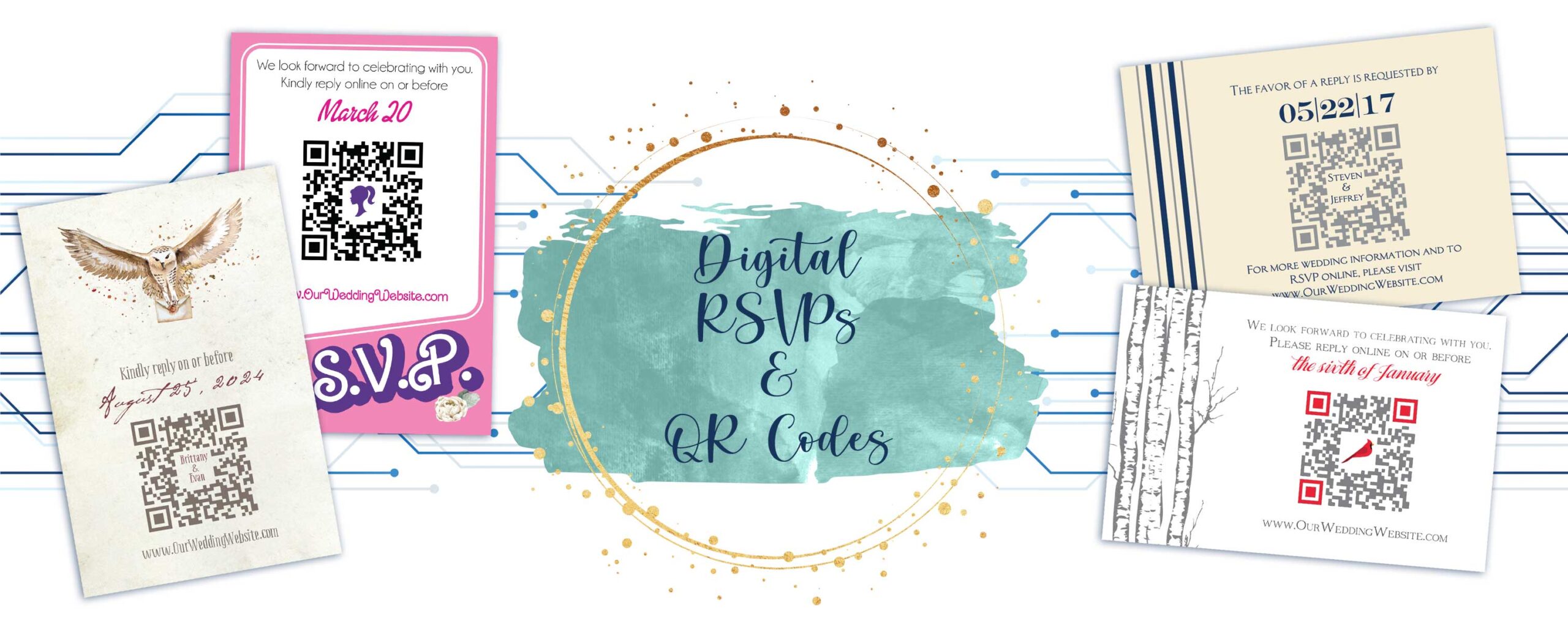
In this digital age, wedding planning has taken a leap forward with the rise of digital RSVPs and QR response cards. These modern alternatives have been gaining popularity among couples, prompting numerous questions about how and if to incorporate them. To shed light on this trend, we’re here to explain how they work and offer invaluable tips on how to incorporate them into your invitations!
Embracing digital RSVPs can be a game-changer when it comes to managing guest responses for your wedding. Not only does it save you precious time, but it also can streamline the process. Various wedding website platforms now offer online RSVP options that integrate directly with your guest list, providing real-time updates on who’s coming, who’s not, and who hasn’t responded yet. Alternatively, some of our couples have opted to link their responses to personalized Google Forms, taking full control of the RSVP process.
However, if you’re aiming for a more traditional and formal ambiance for your wedding, the classic mail-back response card remains an excellent choice. This traditional approach proves especially beneficial when specific details need to be collected that may not be accommodated by a wedding website alone. For instance, caterers often require precise meal preferences tied to individual guests, while price breaks for guests under 21 may depend on their respective ages. Moreover, if space is limited, you may wish to include something like, “We have reserved ___ seats in your honor” that can be filled in for each guest through the traditional RSVP method.
Technology can also present challenges, particularly for older guests who may not be as comfortable with QR codes or online options. In such cases, ordering a mix of digital response cards and traditional mail-back response cards in your stationery suite would ensure inclusivity. We have also hybrid response cards that offer the standard fill-in fields that can be mailed back, but also a web address offering online RSVPs but with no QR code.
Additionally, it’s worth noting that free QR code creation websites typically provide codes that expire after a given number days, and may require payment for extended usage or customizations like color adjustments. We always recommend printing the actual web address (or a shortened version) on the response card, just in case of technical difficulties.
At Uniquely Inviting, we can help address all these concerns. Our invitation designs can be effortlessly tailored to incorporate web addresses and/or QR codes on the response card for digital RSVPs. Our QR code generator generates codes that never expire, eliminating any worries about sudden malfunctions. Should your digital RSVP address be lengthy or complicated, we can create a custom short link for a more user-friendly experience. We also can seamlessly integrate QR codes into your invitation design, offering customization options such as personalized colors, center graphics, monograms, and more!
Typically, even with the adoption of digital RSVPs or QR response cards, that info will still be included on its own card. Due to space limitations in most designs, it is difficult to squeeze in all of the essential information like the QR code, web address, RSVP-by date, and other pertinent details on to the invitation itself. However, exceptions can sometimes be made, especially for designs with fewer graphic elements, where incorporating the information within the invitation itself might be possible. Over the past 15 years, we’ve gotten pretty good at figuring out the best ways to accommodate exactly what you need. It’s all about what works best for you and not how many cards we can sell you.
If you have any questions at all about digital RSVPs or QR response cards, please let us know! We are more than happy to answer any questions that you might have to ensure a stress-free wedding planning experience for you!



